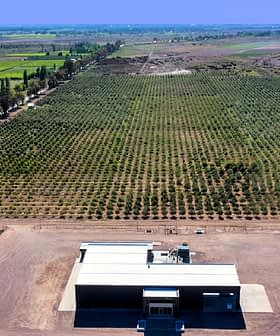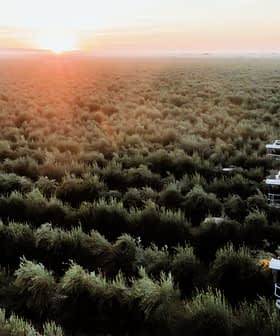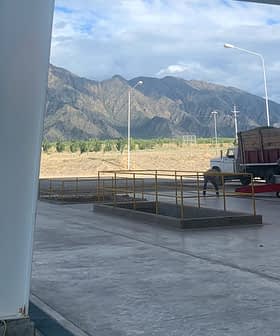The cold weather in San Juan, Argentina over the past several weeks is similar to that experienced in 2007- a year in which scores of olive groves, nearly 70 percent of the province’s total, were lost due to the drop in temperature. Olive oil businessmen have already made their first predictions and they are pessimistic to say the least. The olive trees of the province’s eastern zones already show signs of deterioration as frost often kills flowering buds and the fruits themselves. As a result, Argentinean producers with young plants are most likely to face crippling losses this winter.
 According to Argentina’s National Institute of Agricultural Technology (INTA), this year’s winter hours (those below 7 degrees Celsius/ 44.6 degrees Fahrenheit) are predicted to reach some 1042 hours- 3 hours more than the total winter hours in 2007. The most damaging of these hours, however, are those which post below-zero temperatures as these kinds of temperatures will severely damage any exposed olive trees.
According to Argentina’s National Institute of Agricultural Technology (INTA), this year’s winter hours (those below 7 degrees Celsius/ 44.6 degrees Fahrenheit) are predicted to reach some 1042 hours- 3 hours more than the total winter hours in 2007. The most damaging of these hours, however, are those which post below-zero temperatures as these kinds of temperatures will severely damage any exposed olive trees.
The president of the Olive Oil Association of San Juan, Antonio Olivares, spoke frankly of Argentinean producers’ fears: “The situation that olive growers face at this moment is one of great concern. We predict that within the next 20 days we will be able to assess the damage done to small plants and in September, the other plants as well, but so far everything indicates severe losses.”[1]
Carlos Pasquet, a traditional olive producer from the San Juan region, explained these worries further: “This year’s problems are similar to what happened in 2007, a terrible year, but there are differences because we have had very high level of humidity as well as some snow, which should temper some of the damage done to the plants. Unfortunately, we have had plants frozen up until the cross-where the trunk divides into branches-and we have had zones where the plants are now totally useless, which has been a disaster for many of my colleagues in the region.”
The San Juan province is home to 18,600 hectares of olive trees, many of the Manzanilla variety which is unfortunately highly sensitive to the cold. The rest of the hectares are dedicated to other varieties such as Arbequina or Changlot which are a bit more resistant to the cold. The 2009/2010 season saw massive reductions in olive harvests and olive oil production, numbers which showed volumes of only 50 – 60 percent of that of the previous year’s campaign. Industry experts say that in some ways these losses benefited producers as prices soared through the roof. The question now, however, is whether Argentina will be able to meet an ever-increasing demand in the face of this winter’s severe losses.
.
.
[1] Diario de Cuyo









